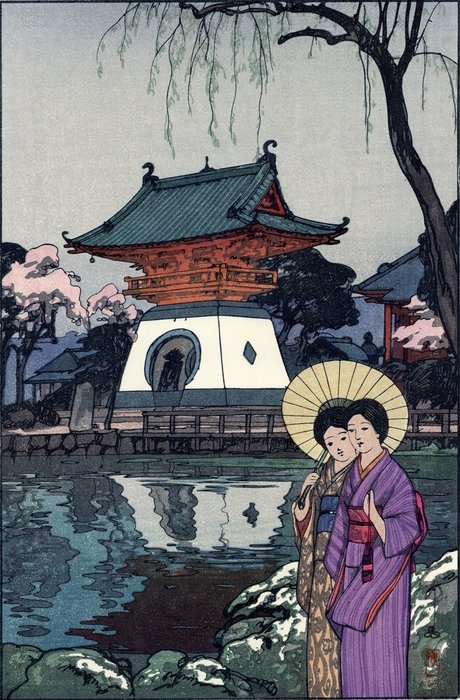
Original woodblock print, Published by Kyoto hanga'in 京都版画院 - Paper - Wada Sanzō (1883-1967) - "Shepādo ken" シェパード犬 (shepherd dog) - Japan - 1953 (Shōwa 28)
No. 82865957

No. 82865957

Original woodblock print, Published by the Yoshida studio - Paper - Yoshida Hiroshi (1876-1950) - Shinobazu Pond 不忍池 - From the series "Tōkyō jūnidai” 東京十二題 (Twelve Views of Tokyo) - Japan - 1971 (Showa 46)
First edition 1928. This is a later edition from 1971
memo
Along with Hasui Kawase and Shinsui Ito, he is a representative printmaker and Western-style painter of Shin-hanga. When I traveled to Europe and the United States, realized the high evaluation of Japanese woodblock prints such as ukiyo-e, and was full of motivation to create new woodblock prints incorporating Western painting techniques, I met the publisher, Shozaburo Watanabe.
Then, in 1921, he released seven works under Watanabe and began his career as a printmaker. In 1925 after the earthquake, he started making his own woodblock prints in his own workshop, based on the oil paintings he drew on his trip to Europe and the United States. From that workshop, masterpieces covering the Grand Canyon, Matterhorn, Venice, Egypt, etc. were produced, and since then, landscape paintings from all over Japan and works depicting Southeast Asia have been produced one after another. His sensitive, delicate, and poetic works that combine the descriptive power of authentic Western-style paintings with traditional woodblock techniques have been highly evaluated, especially for colors, and their subtle shadows. In order to express a sense of transparency and transparency, it sometimes takes a surprising amount of time and effort to rub it 96 times. His wife Fuji (藤遠), his eldest son Toshi, his second son Hotaka, his wife Chizuruko, and his daughter Ayemi are all artists, so they are known as the “Yoshida family.”
How to buy on Catawiki
1. Discover something special
2. Place the top bid
3. Make a secure payment